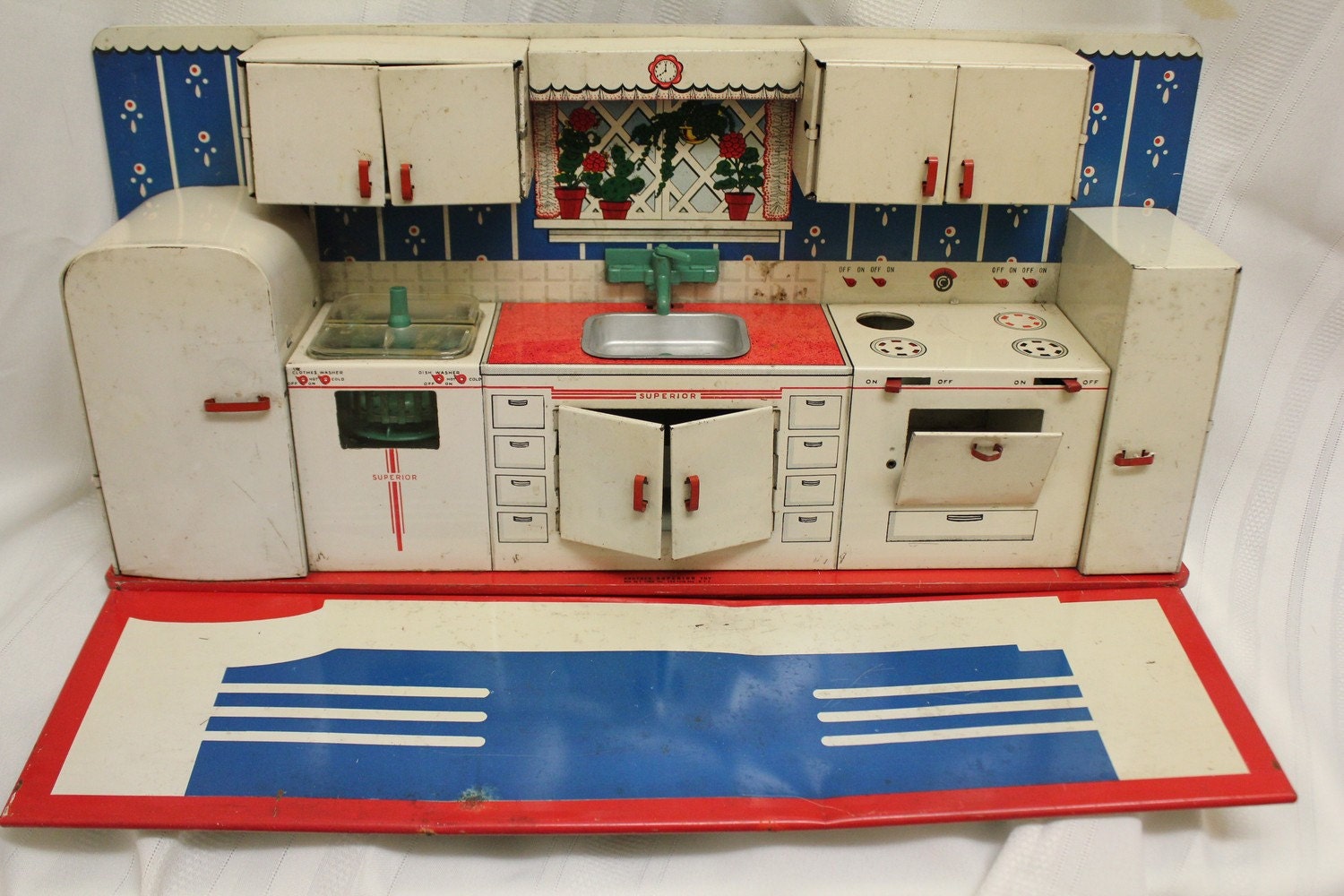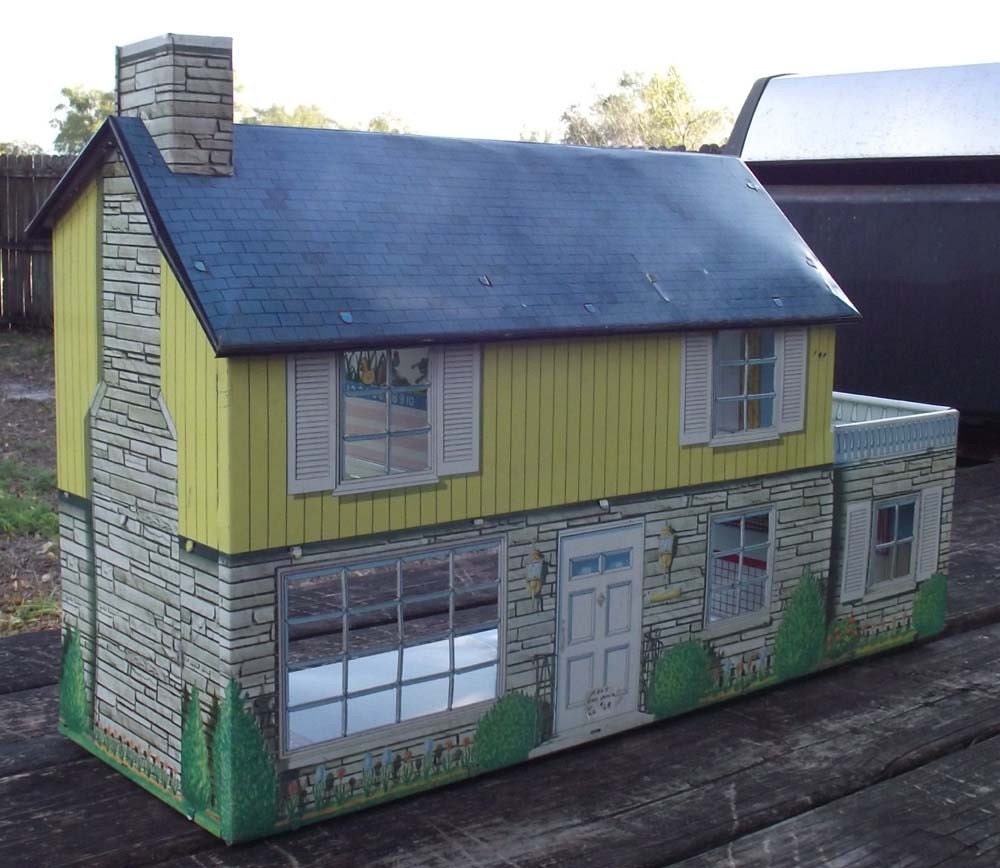 |
| Photo Courtsy of Nachokitty |
 |
| Photo courtesy of RetroVintageBazaar |
No other line of plastic dollhouse furniture had more accessories than Renwal. They were as detailed on the back as they were on the front. Everything from telephones to bathroom scales. The rarest piece of Renwal furniture is the broom (121). The piece that merits the most attention is the sewing machine. It is made with 13 separate pieces all glued together. The sewing machine retreated into the table when closed and the needle actually moved up and down when the wheel was turned. No Renwal collection would be complete without this piece, but expect to pay premium price for it.
The bright color of the Renwal furniture contributed to their popularity then and still contributes to the popularity today. To see a finished Renwal house is to gaze upon a rainbow of color. Many of the pieces also had texture. The living room furniture was
The bright color of the Renwal furniture contributed to their popularity then and still contributes to the popularity today. To see a finished Renwal house is to gaze upon a rainbow of color. Many of the pieces also had texture. The living room furniture was
“upholstered” and the beds had spreads which were patterned. Even the bathroom hamper appeared to be made of wicker.
 |
| Photo courtesy of annafilomena |
I could go on and on about Renwal, but will stop for now. If you are looking to add to you collection or thinking of starting a collection, stop by Etsy and have a look around at a few of our Vintage sellers…
Remember that at the end of this series will be our BIG reveal that has been a culmination of work over the past 40 years.. So stay tuned in, and please feel free to comment.






